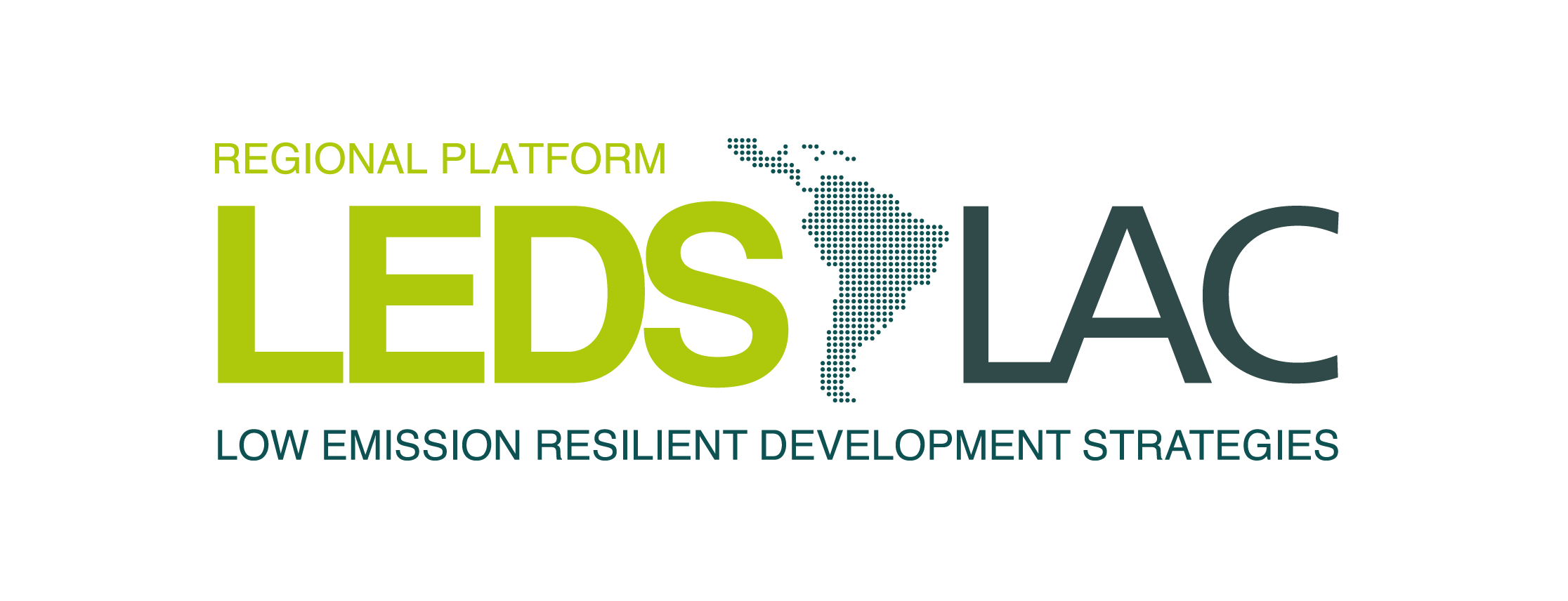Day: Wednesday, November 21, 2018.
Time: 09:00 - 10:30 am (Costa Rican time)
Check the time according to your location: http://bit.ly/2PqWilw[/fusion_li_item][/fusion_checklist][fusion_separator style_type="none" top_margin="" bottom_margin="" sep_color="" border_size="" icon="" icon_circle="" icon_circle_color="" width="" alignment="" class="" id=""/][fusion_text]
Agenda
Welcome. Ana María Majano. Secretariat Coordinator, LEDS LAC Platform.
Progress and gaps towards compliance with the NDCs in Latin America and the Caribbean: the challenge of sectoral commitments. Joseluis Samaniego. Director of the Sustainable Development and Human Settlements Division, ECLAC. | Download presentation
Working methodology for the elaboration of sectoral objectives of the first NDC of Uruguay and for the follow-up of its implementation. Virginia Sena. Climate Change Advisor, Climate Change Division, Ministry of Housing, Land Management and Environment of Uruguay (MVOTMA). | Download presentation
About the webinar
The countries of Latin America and the Caribbean, as signatories of the Paris Agreement, have adopted commitments to reduce their greenhouse gas emissions by 2030. Meeting the targets established in the Nationally Determined Contributions (NDCs) requires significant changes in the development patterns of important sectors, such as energy, transportation, agriculture, among others, which in turn implies sectoral commitments to reduce emissions.
In this webinar we will present the results of studies by the Economic Commission for Latin America and the Caribbean (ECLAC), on the expected gaps in compliance with the NDCs of the countries of the region taking into account the current course of action, and the need to increase efforts in some sectors. Uruguay's experience in the search for agreements on sectoral targets for the fulfillment of its climate commitments will also be presented. The webinar will be held at Spanish. If you have any questions about this event, please contact the LEDS LAC Platform Secretariat: [email protected].
About the panelists
[/fusion_text][/fusion_builder_column][fusion_builder_column type="1_1″ background_position="left top" background_color="" border_size="" border_color="" border_style="solid" spacing="yes" background_image="" background_repeat="no-repeat" padding="" margin_top="0px" margin_bottom="0px" class="" id="" animation_type="" animation_speed="0.3″ animation_direction="left" hide_on_mobile="no" center_content="no" min_height="none"][fusion_content_boxes settings_lvl="parent" layout="icon-on-side" columns="1″ icon_align="left" title_size="" title_color="" body_color="" backgroundcolor="" icon_circle="" icon_circle_radius="" iconcolor="" circlecolor="" circlebordercolor="" circlebordercolor="" circlebordersize="" outercirclebordercolor="" outercirclebordersize="" icon_size="" icon_hover_type="" hover_accent_color="" link_type="" link_area="" link_target="" animation_delay="" animation_offset="" animation_type="0″ animation_direction="left" animation_speed="0.1″ margin_top="" margin_bottom="" class="" id=""][fusion_content_box title="Joseluis Samaniego" icon="" backgroundcolor="" iconcolor="" circlecolor="" circlebordercolor="" circlebordersize="" outercirclebordercolor="" outercirclebordersize="" iconrotate="" iconspin="no" image="https://ledslac.org/wp-content/uploads/2018/11/Screenshot-2018-11-16-a-las-09.55.14.png" image_width="130″ image_height="130″ link="" linktext="" link_target="_self" animation_type="" animation_direction="" animation_speed=""]He is an economist from the Universidad Autónoma Metropolitana de México (UNAM) and holds a Master's degree in International Political Economy. Between 2002 and 2004 he was Director of the Sustainable Transportation Center of Mexico City. He was Coordinator of International Affairs of the Mexican Ministry of Environment, Natural Resources and Fisheries from 1994 to 2000, where he participated in the negotiation of the Kyoto and Biosafety Protocols. He has been a consultant to the World Bank, the United Nations Development Programme (UNDP), the United Nations Environment Programme (UNEP) and the World Wildlife Fund (WWF), among other international organizations.[/fusion_content_box][fusion_content_box title="Virginia Sena" icon="" backgroundcolor="" iconcolor="" circlecolor="" circlebordercolor="" circlebordersize="" outercirclebordercolor="" outercirclebordercolor="" outercirclebordersize="" iconrotate="" iconrotate="" iconspin="no" image="https://ledslac.org/wp-content/uploads/2018/11/Virginia-Sena-photo.jpeg" image_width="130″ image_height="130″ link="" linktext="" link_target="_self" animation_type="" animation_direction="" animation_speed=""]Chemical Engineer, and started her professional career in the Climate Change area working in the elaboration of the National Greenhouse Gas Inventories of Uruguay, responsible for their compilation and the estimates of the Energy, Industrial Processes and Waste Sectors, for the Inventory series 1990 to 2000. He also participated in the preparation of Uruguay's first two National Communications, coordinating inter-institutional working groups for the identification of mitigation and adaptation measures for Climate Change. She participated in the elaboration of the 2006 IPPC Guidelines for Inventories, being lead author in the Industrial Processes sector and participated in centralized reviews of Inventories of Annex I Countries, organized by the UNFCCC. She is currently lead consultant in the CBIT project for strengthening technical and institutional capacities for transparency in the framework of the Paris Agreement, and in this framework, she is co-coordinating the inter-institutional work being done for the follow-up of Uruguay's NDC, and working on the strengthening of Uruguay's GHG Inventory system.[/fusion_content_box][/fusion_content_boxes][fusion_text]
Additional Material
[/fusion_text][/fusion_builder_column][fusion_builder_column type="1_1″ background_position="left top" background_color="" border_size="" border_color="" border_style="solid" spacing="yes" background_image="" background_repeat="no-repeat" padding="" margin_top="0px" margin_bottom="0px" class="" id="" animation_type="" animation_speed="0.3″ animation_direction="left" hide_on_mobile="no" center_content="no" min_height="none"][fusion_content_boxes settings_lvl="parent" layout="icon-on-side" columns="1″ icon_align="left" title_size="" title_color="" body_color="" backgroundcolor="" icon_circle="" icon_circle_radius="" iconcolor="" circlecolor="" circlebordercolor="" circlebordercolor="" circlebordersize="" outercirclebordercolor="" outercirclebordersize="" icon_size="" icon_hover_type="" hover_accent_color="" link_type="" link_area="" link_target="" animation_delay="" animation_offset="" animation_type="0″ animation_direction="left" animation_speed="0.1″ margin_top="" margin_bottom="" class="" id=""][fusion_content_box title="NDC Uruguay Monitoring System" icon="" backgroundcolor="" iconcolor="" circlecolor="" circlebordercolor="" circlebordercolor="" circlebordersize="" outercirclebordercolor="" outercirclebordersize="" iconrotate="" iconrotate="" iconspin="no" image="https://ledslac.org/wp-content/uploads/2018/11/Sistema-de-Monitoreo-NDC-Uruguay.xlsx" image_width="130″ image_height="130″ link="https://ledslac.org/wp-content/uploads/2018/11/Sistema-de-Monitoreo-NDC-Uruguay.xlsx" linktext="" link_target="_blank" animation_type="" animation_direction="" animation_speed=""][/fusion_content_box][/fusion_content_boxes][/fusion_builder_column][/fusion_builder_row][/fusion_builder_container]
